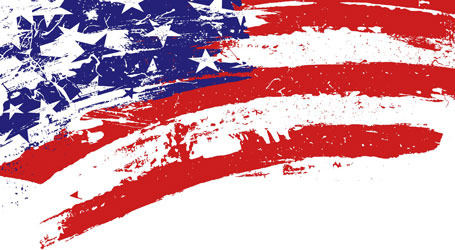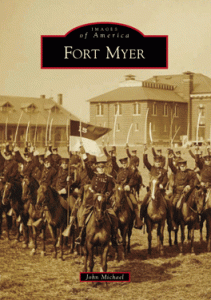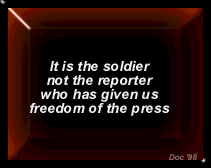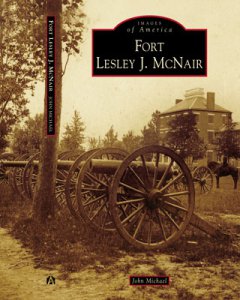Remembering a Mentor, Friend, and a Defender of Freedom
When I began my militarization, I was blessed to meet and begin a mentoring and friendship that lasted nearly fourteen years. The connection began when I was called upon to photograph the final honors at Arlington National Cemetery – primarily of fallen Special Forces veterans. Colonel Norton, known to most as “Charlie” (there’s only one person who I know of who refers to him as “Charles” !), orchestrated an ongoing protocol of Chapter XI of the Special Forces Association. Each fallen Special Forces veteran, who is interred in Arlington National Cemetery, has a cadre of Special Forces veterans attending and supporting the final honors ceremony.
Initially, my time spent with the colonel was to select photos to be included in the Special Forces Association’s publication called “The Drop”. It was definitely “quality time” learning about the US Army and insights into his service to the United States over the three-plus decades of his life. During this time I was awarded honorary membership to Chapter XI by then chapter president LTC Wallace “Wally” Johnson. I don’t know if Colonel Norton had anything to do with it, but I surmise he did.
As the years passed and my involvement with the US Army expanded to include the 3d Infantry Regiment – “The Old Guard”, US Army Band – “Pershing’s Own”, The Golden Knights, and more, the colonel was a resource who was extremely valuable especially when it came to designing a notecard for the 14th Infantry regiment, and even when it came to writing my first book, “Images of America – Fort Myer“.
DISTINGUISHED MEMBER OF THE SPECIAL FORCES REGIMENT
COLONEL CHARLES W. NORTON, JR.
Inducted April 2011

DE OPPRESSO LIBER
HIGHLIGHTS OF COLONEL NORTON’S SERVICE
COL Charles W. Norton, Jr. enlisted in the Army in 1944 and was assigned to the Persian Gulf Command (Iran) where he earned his commission. After the war, he returned to Maine, working with the National Guard, before volunteering for airborne and then a newly created organization Special Forces.
He completed training as the honor graduate in the second class and was part of the nucleus of 10th Special Forces Group (Airborne) (10th SFG(A)) which moved to Bad Toelz, Germany Volunteering for service in Korea, he was one of approximately 50 SF personnel deployed to the 8240th Army Unit, the only unit active in unconventional warfare operations at the time. Norton was assigned to the UN Partisan Infantry Forces – Korea (UNPIFK), a guerilla force, consisting displaced of North Koreans responsible for conducting coastal raiding and intelligence-gathering operations; sabotage of enemy lines of communication; recovering UN personnel; and hit-and-run missions.
Norton’s post-Korea assignments included service with the 77th SFG(A); as a detachment commander in the 10th SFG(A) under Colonel Aaron Bank; and as an instructor on intelligence gathering techniques at the UW Department, U.S. Army Special Warfare School. In 1962-63, CPT Norton, assigned to 1st SFG(A), was made the first full-tour commander of the resident Detachment SF in Korea. He was instrumental in assisting the TON Korean Army in developing its burgeoning special operations capabilities and standing up a Special Forces type unit.
In 1965, following a tour with 1st Armored Division, Norton returned to Special Forces, deployed to the Republic of Vietnam, and was assigned to the Studies and Observation Group commander (SOG) as of Forward Operating Base (FOB) 2, replacing MAJ Larry Thorne who had been lost as part of a reconnaissance team (RT). Norton expanded the program, establishing two FOBs at Khe Sanh and Dak To and further strengthening the structure and support mechanisms required for successful cross-border reconnaissance programs. Often serving as both operations and launch officer as well as the on-scene commander for most insertions and recoveries, he directed the equipping, training, briefing, deployment, and recovery of multiple RTs, flying daily with one or more Forward Air Controller (FAC) reconnaissance flights, maintaining radio contact with deployed RTs. He, upon seeing enemy activity unseen by RTs on the ground, frequently found himself directing RTs to exfiltration sites simultaneous to coordinating complex fire missions by RVNAF, US Army, and USAF aircraft in order to cover the extractions. During his last months as FOB commander, before assuming duties as XO for Command Control Central (CCC), he built up Kontom’s support facilities, including barracks, mess hall, and dispensary.
Norton returned stateside, attending the U.S. Army Command and General Staff School, with a follow-on assignment as the sole instructor in UW and airborne operations at the Armed Forces Staff College. During this time, he also attended Park College, graduating Magna cum laude. In 1969, returning to Vietnam, he served first as the executive officer of the 5th SFG(A), and later as an infantry battalion commander to the 14th Infantry, 24th Infantry Division.
After his tour in Vietnam, Norton was made the UW Branch Chief, and, later the Special Operations Division chief to the Army’s Deputy Chief of Staff for Operations, representing the Army staff on significant joint actions pertaining to special operations. After a course in the Finnish language, he was assigned as the Army attaché in Finland before returning to Fort Bragg as commander of the 7th SFG(A). He then assumed the position of deputy commander of the U.S. Army JFK Center for Military Assistance (now the U.S. Army Special Operations Command). In that position, he ensured the maintenance of the 7th SFG(A) as an active group. He also actively revived the historical connection with the First Special Service Force (FSSF), a joint U.S.Canadian commando World War II unit that provides SF its lineage as well as its regimental insignia. FTX Maple Leaf, done in concert with the Canadian Army in 1979, evolved into Menton Day, an annual celebration held alternately each December in the United States and Petawawa, Canada.
Retiring in 1981, Norton, in his short speech said, “Thirty-five years … Was it worth it?.. Hell, yes!” He continued his association with Special Forces as a member, later president, and now as president emeritus of the Special Forces Association Chapter XI, in Washington, DC. He established procedures ensuring all interments of Special Forces (active-duty, retired, officer, or enlisted) at Arlington National Cemetery are attended by chapter members. Additionally, he serves as liaison with the First Special Service Force Association, attending their annual reunions. During the late 80s and 90s, Norton assisted the Finnish government and the Joint Recovery Task Force to find MAJ Larry Thorne’s remains. Successful, the task force found bone fragments from the crash site in 1999 which analysis would prove to belong to Thorne. MAJ Larry Thorne’s remains were interred in Arlington National Cemetery in 2003.
Norton’s awards and decorations include the Combat Infantryman’s Badge, three Legions of Merit, two Bronze Star Medals, one Bronze Star Medal with valor device, the Joint Service Commendation Medal, seven Air Medals, the Vietnamese Cross of Gallantry with gold and silver stars, the Army General Staff Identification Badge, the Excellence in Competition Badge (rifle), the Good Conduct Medal (three awards), the Order of the Knights of the Finnish White, the U.S. Army Parachutist Badge and 11 service medals.
Chosen Soldier: The Making of a Special Forces Warrior
BUY THE BOOK
Images of America – Fort Myer is a pictorial chronicle of the first one hundred years of history containing over two hundred photographs, maps, and images. Beginning in the 1860s and carrying through the 1960s it provides a view of what was over time. An autographed copy of the book can be purchased at BUY THE BOOK.
of what was over time. An autographed copy of the book can be purchased at BUY THE BOOK.







